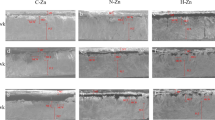Abstract
Effects of dietary endrin treatments (0.5 and 3.0 ppm) on development, egg production, and accumulated residue in treatment adults and their eggs were examined for mallard ducks (Anas platyrhynchos). Egg production, fertility, and hatchability were not affected, although a 9.6% drop in embryo survival was observed for the 3.0 ppm treatment. Hatchling survival to 14 days was not affected by endrin treatments. Males treated with 3.0 ppm sustained a 4.5% loss in body weight. Treated females developed a higher body fat content and greater accumulation of endrin than males. Endrin was deposited in the eggs of treated females at about the same dietary concentration of endrin in their feed.
Similar content being viewed by others
References
Baldwin MD, Crayford JW, Hutson DH, Street DL (1976) The metabolism and residues of (14C) endrin in lactating cows and laying hens. Pestic Sci 7:575–594
Blus LJ, Cromartie E, McNease L, Joanen T (1979) Brown pelican: population status, reproductive success, and organochlorine residues in Louisiana, 1971–1976. Bull Environ Contam Toxicol 22:128–135
Blus LJ, Henny CJ, Kaiser TF, Grove RA (1983) Effects on wildlife from use of endrin in Washington State orchards. Trans 48th No Amer Wildl Nat Res Conf, 1983:159–174
Fleming WJ, McLane MAR, Cromartie E (1982) Endrin decreases screech owl productivity. J Wildl Manage 46:462–468
Food and Drug Administration: Pesticide Analytical Manual. Section 212.13A. US Department of Health and Human Services, Washington DC, 2 pp (April 1983)
Haseltine SD, Prouty RM (1980) Aroclor® 1242 and reproductive success of adult mallards (Anas platyrhynchos). Environ Res 23:29–34
Hill EF, Heath RG, Spann JW, Williams JD (1975) Lethal dietary toxicities of environmental pollutants to birds. US Fish and Wildl Serv Spec Sci Rep-Wildl 191, Washington DC, 61 pp
Hoffman DJ, Albers PH (1984) Evaluation of potential embryotoxicity and teratogenicity of 42 herbicides, insecticides, and petroleum contaminants to mallard eggs. Arch Environ Contam Toxicol 13:15–27
Hunt EG, Azvedo JA Jr, Woods LA Jr, Castle T (1969) The significance of residues in pheasant tissues resulting from chronic exposure to DDT. In: Chemical Fallout, Miller MW, Berg GG (eds) Charles C Thomas, Springfield, IL, pp 335–360
Jager KW (1970) Aldrin, dieldrin, endrin, and telodrin. Elsevier Publishing Co, Amsterdam, p 43
Peterson SR, Ellarson RS (1978) p,p′-DDE, polychlorinated biphenyls, and endrin in oldsquaws in North America, 1969–1973. Pestic Monit J 11:170–181
Pimentel D (1971) Ecological effects of pesticides on non-target species. Exec Office President, Office Sci Technol, Washington DC, 220 pp
Schladweiler P, Wiegand JP (1982) Relationships of endrin and other chlorinated hydrocarbon compounds to wildlife in Montana, 1981–1982. Wildl Div Montana Dept Fish, Wildl and Parks, Helena, Montana, pp 20–22, 59, 80–82
Stickel WH, Reichel WL, Hughes DL (1979) Endrin in birds: lethal residues and secondary poisoning. In: Deichmann WB (ed) Toxicology and Occupational Medicine, Elsevier/North Holland, New York, pp 397–406
Treon JF, Cleveland FP, Cappel J (1955) Toxicity of endrin for laboratory animals. J Agric Food Chem 3:842–848
US Department of Agriculture (1981) Micro-alumina column analysis of chlorinated hydrocarbons in fatty foods, Washington DC, 2 pp
US Fish and Wildlife Service (1977) Modified Lipid Determination by Patuxent Analytical Manual. Environmental Residue Chemistry Project, LD 2.0, USFWS, Patuxent Wildlife Research Center, Laurel, MD, l pp
Vangilder LD, Peterle TJ (1983) Mallard egg quality: enhancement by low levels of petroleum and chlorinated hydrocarbons. Bull Environ Contam Toxicol 30:17–23
Author information
Authors and Affiliations
Rights and permissions
About this article
Cite this article
Roylance, K.J., Jorgensen, C.D., Booth, G.M. et al. Effects of dietary endrin on reproduction of mallard ducks (Anas platyrhynchos). Arch. Environ. Contam. Toxicol. 14, 705–711 (1985). https://doi.org/10.1007/BF01055777
Received:
Revised:
Issue Date:
DOI: https://doi.org/10.1007/BF01055777




